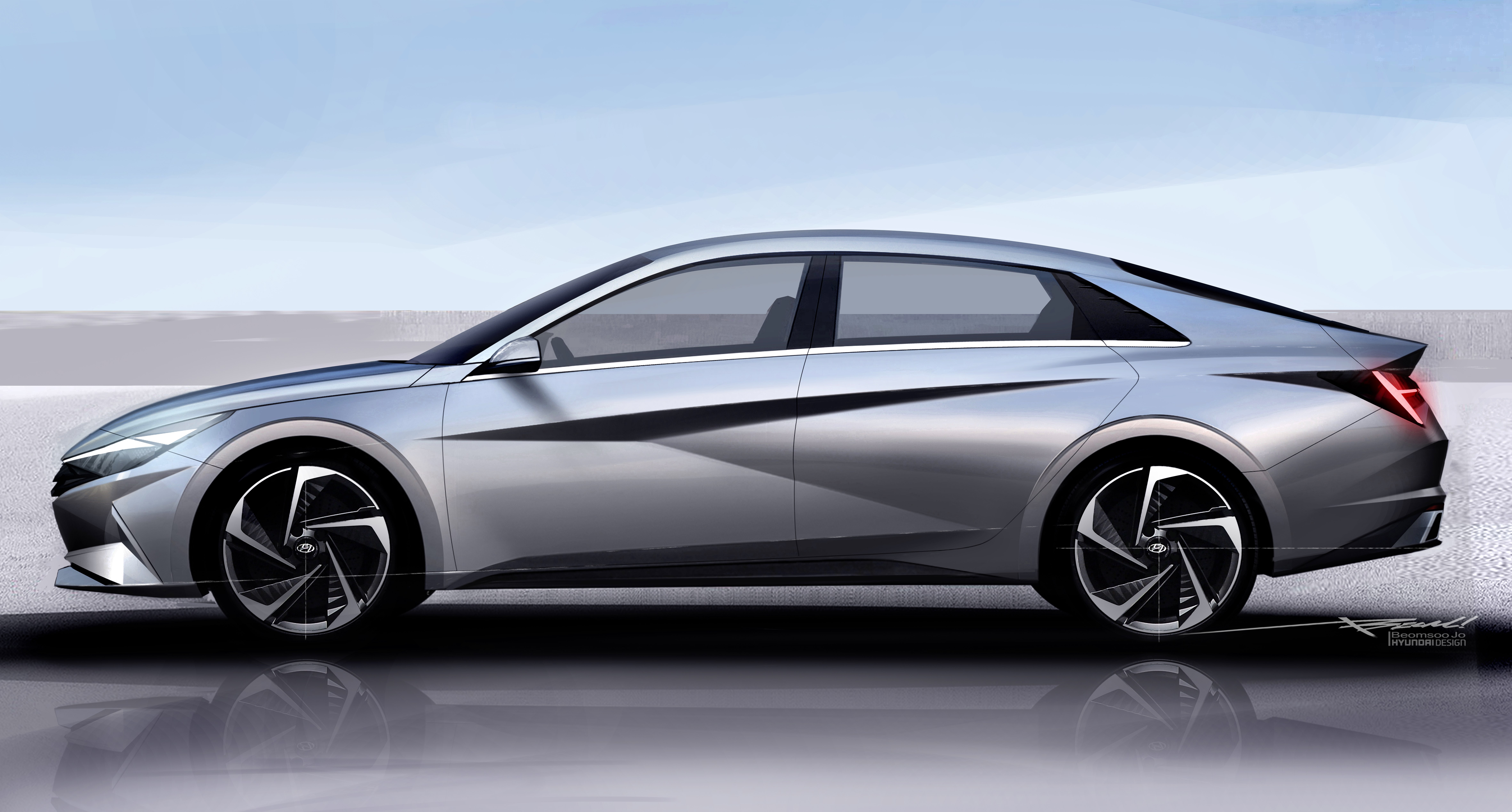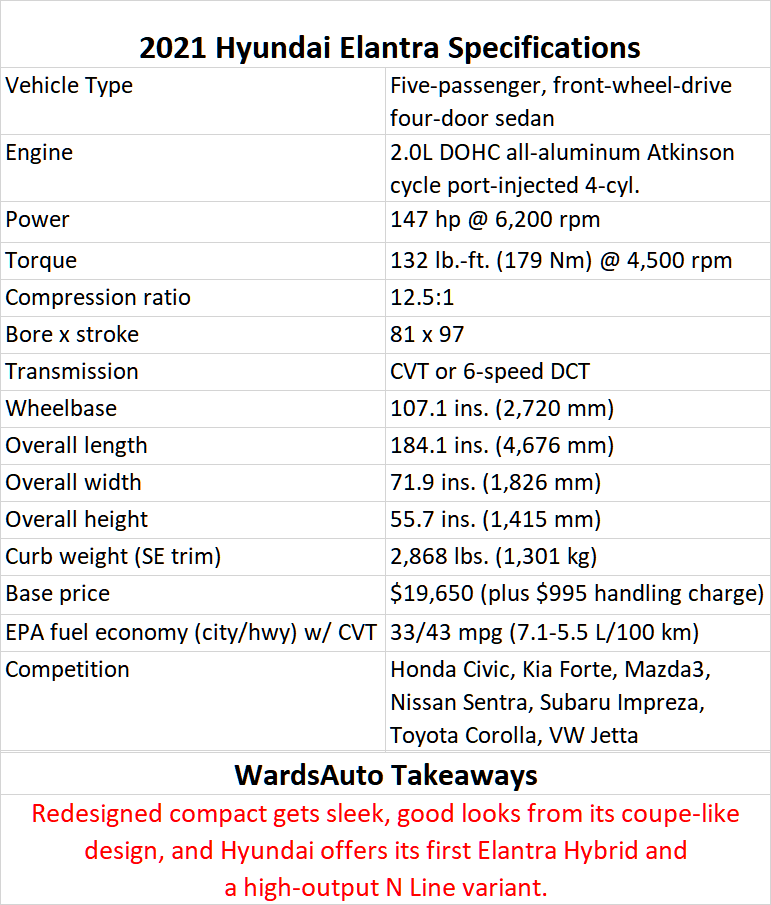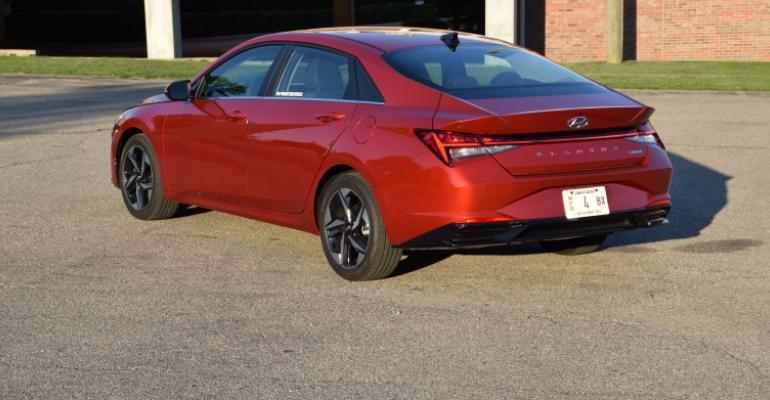The North American market is migrating from passenger cars to trucks and (mostly car-based) crossovers, so Detroit automakers have all but abandoned family cars.
Yet the compact car segment is still large and important enough – at 1 million 2020 model-year sales, down 30% from 2019 – that offshore automakers, especially Japanese and Korean, are investing in and competing hard for the sales that remain.
Nissan has just launched an excellent all-new Sentra, an 11th-generation Honda Civic is just over the horizon, and now comes Hyundai with a fully redesigned (seventh-generation) 2021 Elantra – available in conventional, Hybrid and N Line variants – that is bound to gain market share.
For starters, look it over. Its grille is fashionably large but well executed, and conflicting character lines on its sides may be controversial to some. But its sleek “four-door-coupe” shape and distinctive derrière set it apart from even that handsome new Sentra.
Beyond its good looks are the ’21 Elantra’s surprisingly satisfying dynamics, hoot-to-drive N Line, 50-mpg (4.7 L/100 km) efficiency from the smooth-driving hybrid and numerous standard features, such as wireless Apple CarPlay and Android Auto.
The new Elantra arrives with enhanced natural-language voice-recognition and available twin 10.25-in. (26-cm) multimedia touchscreens angled slightly toward the driver under a single piece of glass. The cluster offers three different views (utility, driver assistance and navigation).
Dual Bluetooth support also is available, allowing two devices to pair at the same time – one for phone calls and one for streaming audio. The new system retains a volume knob.
Riding on its lighter, stronger, third-generation K3 compact vehicle platform, the ’21 Elantra is longer, lower and wider than the ’20 model, with a slightly longer wheelbase as well.

Instrument panel of 2021 Elantra Hybrid.
Despite some cheap-looking plastic here and there, the new Elantra’s interior is roomy and attractive, especially with the available two-tone trim. Optional are customizable 64-color mood lighting and a Bose eight-speaker premium sound system.
Despite its sleek roofline, the ’21 Elantra has more front headroom (40.6 ins. [1,031 mm]) and the same rear headroom (37.3 ins. [947 mm]) as its predecessor. The longer wheelbase provides “best-in-class” 38.0 ins. (965 mm) of rear legroom, the increased width results in more shoulder room front and rear, and its 14.2 cu.-ft. (402-L) trunk holds more than most in this segment.
The base engine is a 147-hp, 132-lb.-ft. (179-Nm), port-injected 2.0L Atkinson cycle 4-cyl. driving the front wheels through a CVT. Hyundai says the new intelligent variable transmission more closely couples engine sound and acceleration to driver input with step shifts emulating those of a conventional automatic. EPA ratings are 33/43 mpg (7.1-5.5 L/100 km) city/highway in standard SE and 31/41 mpg (7.6-5.7 L/100 km) in midrange SEL and top-line Limited trims.
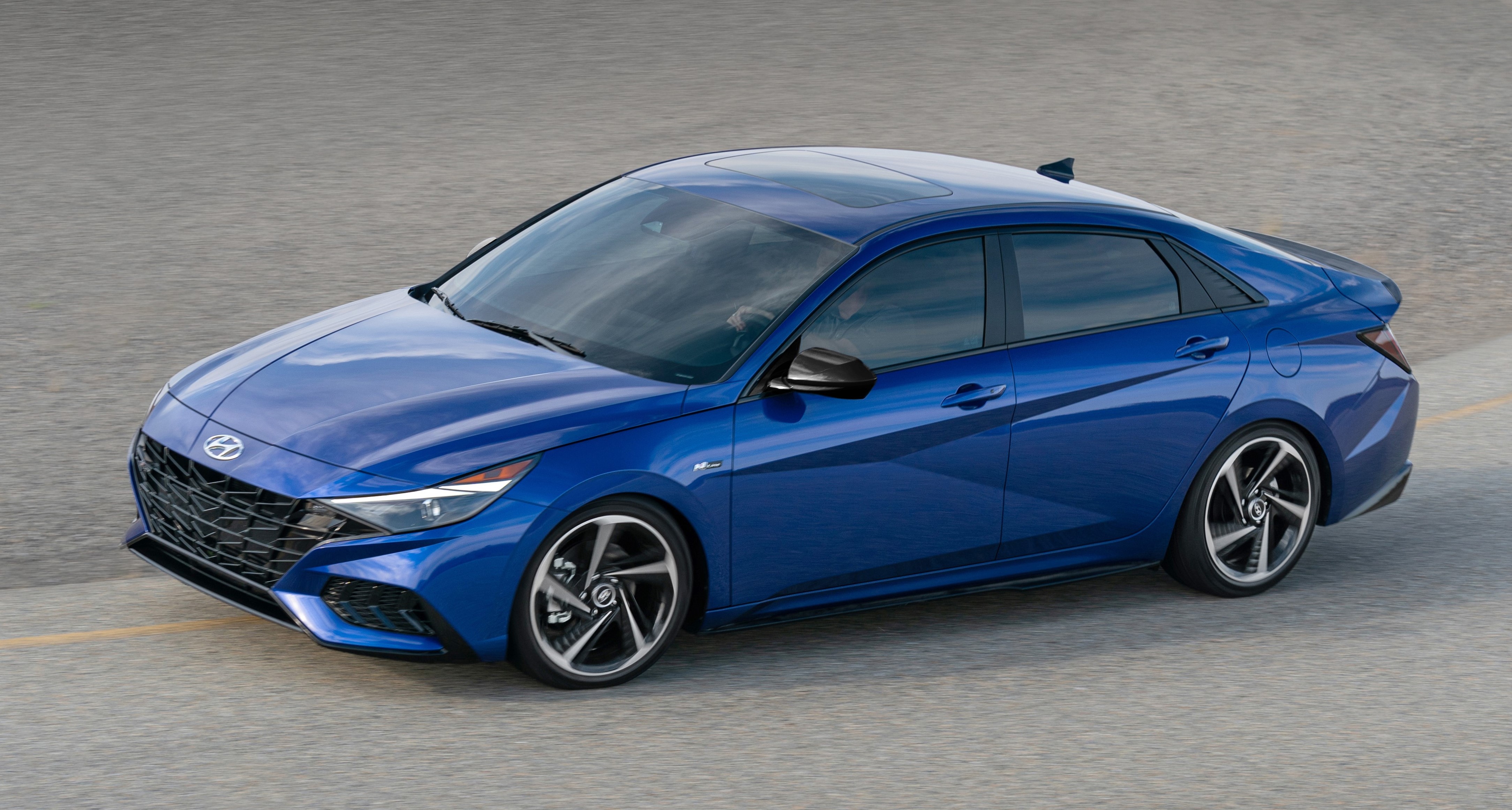
On twisty California roads, the suspension impresses as taut yet comfortable with little body roll and good impact absorption.
The hybrid is more athletic thanks to a fully independent multilink rear suspension, and the N Line (pictured above) approaches German sport sedan responsiveness. Of the three drive modes – Normal, Smart and Sport – the latter noticeably enhances steering and throttle response, and we find the Elantra’s adaptive cruise/ lane-keeping and centering function better than those in many pricier vehicles.
Elantra’s First Hybrid, N Line
Hyundai’s first Elantra Hybrid marries a 1.6L direct-injected Atkinson-cycle 4-cyl. to a 32-kW permanent-magnet electric motor for a total system output of 139 hp and 195 lb.-ft. (264 Nm) of torque and EPA-rated fuel economy of 53/56 mpg (4.4-4.2 L/100 km) city/highway in SEL trim.
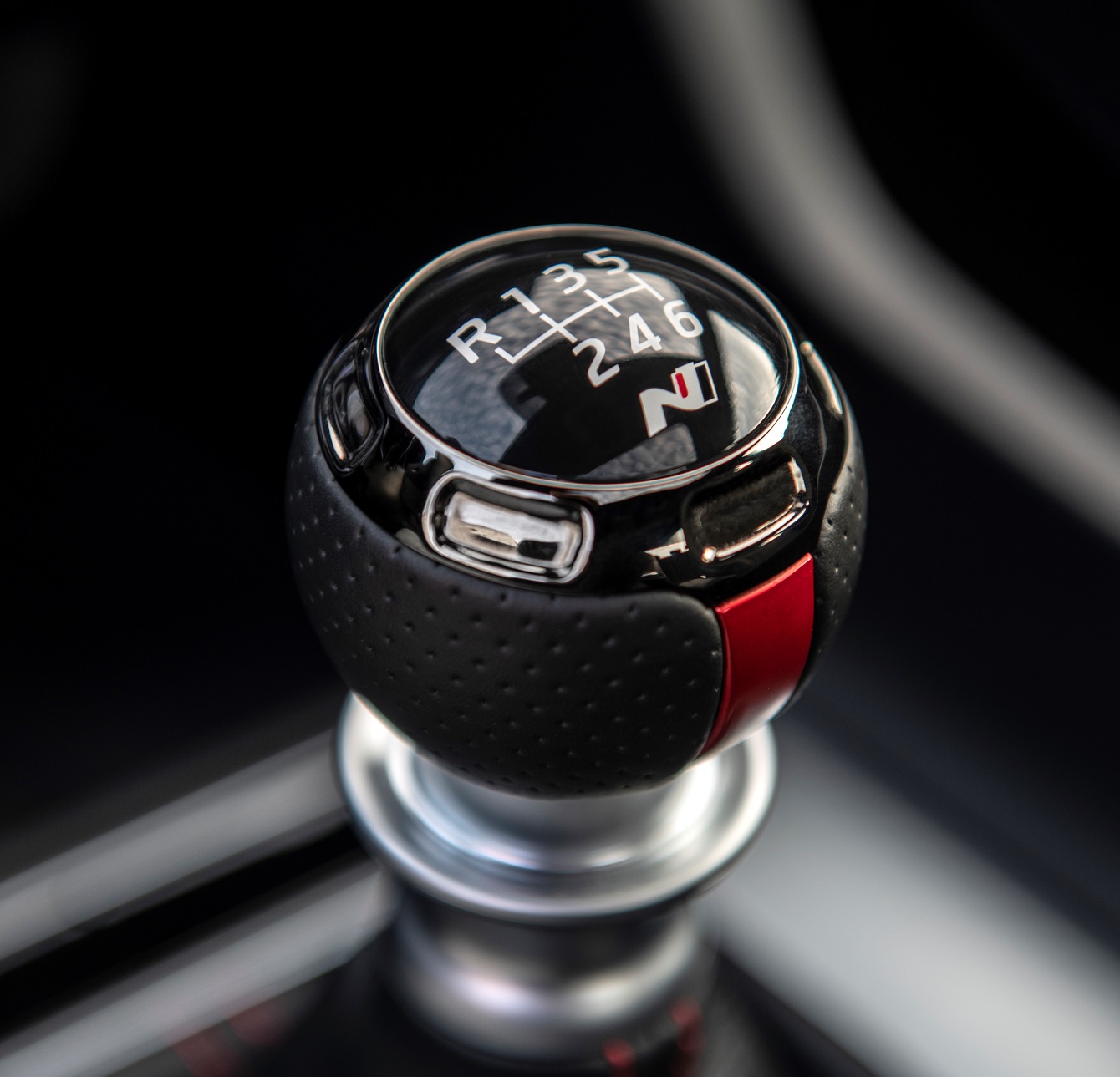 A six-speed dual-clutch transmission is standard, and a 1.32-kWh lithium-ion battery under the rear seats offers limited electric-only range. We find the hybrid system pleasingly transparent during a spirited drive, with the motor providing added acceleration for two-lane passing and the braking strong and linear. Our observed fuel economy during a 74-mile (119-km) jaunt was 46.7 mpg (5.0 L/100 km).
A six-speed dual-clutch transmission is standard, and a 1.32-kWh lithium-ion battery under the rear seats offers limited electric-only range. We find the hybrid system pleasingly transparent during a spirited drive, with the motor providing added acceleration for two-lane passing and the braking strong and linear. Our observed fuel economy during a 74-mile (119-km) jaunt was 46.7 mpg (5.0 L/100 km).
The Limited Hybrid, starting at $28,100, represents the top of the range for the ’21 Elantra.
Also highly entertaining on a challenging mountain drive was a sporty N Line Elantra with a six-speed manual transmission (pictured above, left). The clutch was light and engaged a bit high, and the shifter seemed lightly sprung yet fairly precise, but the overall impression was Teutonic sport sedan.
Performance from its 201-hp 2.0L turbo 4-cyl. was strong at all speeds, largely due to 195 lb.-ft. (264 Nm) of torque spread over a wide band. Our only complaint was a cheaper interior with a smaller touchscreen and manual hard buttons. A still-faster, track-ready Elantra N will arrive in 2021.
Standard safety and driver-assist features include forward collision avoidance with pedestrian detection, lane keeping assist, lane following assist, high beam assist and driver attention warning.
Optional are blindspot collision avoidance assist with rear cross-traffic collision-avoidance assist, smart cruise control, highway driving assist – which combines lane centering and safe distancing at highway speeds – and safe exit warning, which sounds an alert when a vehicle approaches from behind to inform passengers that it may not be safe to open the door.
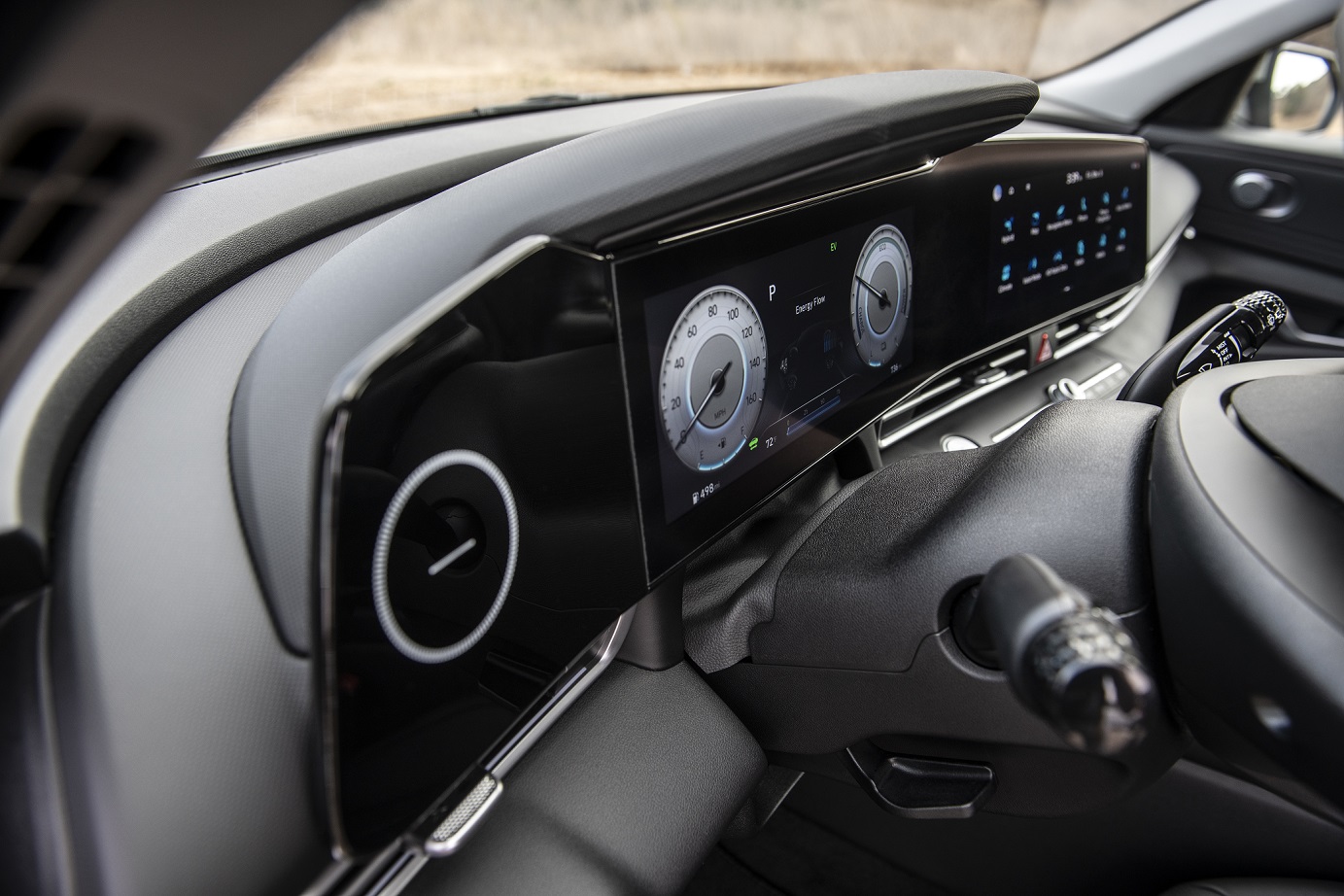
Optional is two 10.25-in. multimedia touchscreens angled slightly toward the driver under single piece of glass, in Elantra Hybrid.
Also optional is reverse parking collision avoidance assist, which warns of pedestrians and obstacles behind the car and can apply emergency braking if needed.
Hyundai’s Blue Link Connected Car System allows remote starting and interior temperature control using the MyHyundai smartphone app. It offers remote door locking and unlocking, can locate the car in a crowded parking lot with remote horn and lights and provides free, up-to-the-minute traffic information and POI searches through cloud-based navigation.
The natural voice recognition can activate climate and other controls through the push-to-talk button on the steering wheel and (like Siri and Alexa) answers questions about nearly anything. The available Hyundai Digital Key uses a dedicated mobile app, Near Field Communication and Bluetooth Low Energy technology to enable the car to be unlocked, started and driven without a physical key. For now, the system is compatible only with Android (not yet Apple) smartphones and can be shared with family and friends.
Through October, Hyundai sold roughly 87,000 units of the outgoing Elantra, third best in segment behind Honda’s Civic at 223,000 and Toyota’s Corolla at 188,000.
But count on the all-new Elantra (pictured below), with a starting price of $19,650, to close in on its rivals.
